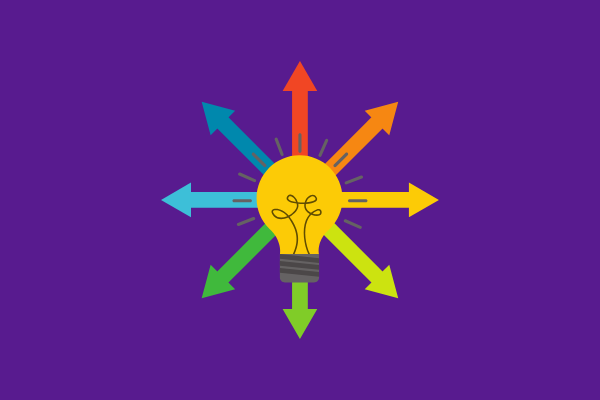Last Updated on 1 year ago by Ecem Ertürk
Building a loyal customer base is essential for any business aiming for long-term success. One of the most effective strategies to achieve this is by utilizing the customer loyalty ladder. This framework helps businesses identify where their customers stand in terms of loyalty and provides a roadmap for moving them up the ladder—from mere prospects to loyal advocates. In this blog, we’ll delve into the customer loyalty ladder, discuss strategies for advancing customers up the ladder, and explore how integrating key concepts can enhance your approach.
Understanding the Customer Loyalty Ladder
The customer loyalty ladder is a conceptual model that categorizes customers based on their level of loyalty to a brand or business. The ladder typically consists of several rungs, each representing a different stage in the customer relationship.
What is the Customer Loyalty Ladder?
The customer loyalty ladder helps businesses understand the journey a customer takes from initial awareness to becoming a loyal advocate. The ladder is divided into five key stages:
- Prospects: Individuals who are aware of your brand but have not yet made a purchase.
- Customers: Those who have made a single purchase but have not yet shown signs of loyalty.
- Clients: Repeat customers who consistently choose your products or services.
- Supporters: Customers who have formed an emotional connection with your brand and are more likely to recommend it to others.
- Advocates: Loyal customers who actively promote your brand to others and serve as brand ambassadors.
Importance of Each Step on the Ladder

Each level of the customer loyalty ladder plays a crucial role in the overall customer loyalty strategy. Understanding these steps allows businesses to tailor their marketing efforts and customer service strategies to meet the specific needs of customers at each stage.
- Prospects: Attracting and engaging prospects is the first step toward building a loyal customer base. Effective marketing strategies and a strong value proposition are essential at this stage.
- Customers: Converting first-time buyers into repeat customers requires excellent product quality and customer service.
- Clients: Nurturing clients involves building trust and providing consistent value, which encourages repeat business.
- Supporters: Cultivating emotional connections with customers is key to transforming clients into supporters. This can be achieved through personalized experiences and exceptional service.
- Advocates: Turning supporters into advocates involves encouraging and rewarding loyalty, as well as leveraging their positive experiences to attract new customers.
Strategies to Move Customers Up the Ladder

Successfully moving customers up the customer loyalty ladder requires a combination of targeted strategies that cater to the needs and preferences of each customer segment.
From Prospect to Customer
Converting prospects into customers is the first critical step in building a loyal customer base. This stage focuses on attracting attention, generating interest, and encouraging the first purchase.
- Personalized Marketing: Tailoring your marketing messages to address the specific needs and pain points of prospects can significantly increase conversion rates.
- Special Offers: Providing discounts, free trials, or other incentives can motivate prospects to make their first purchase.
- Strong Value Proposition: Clearly communicating the unique benefits of your product or service is essential for convincing prospects to choose your brand.
From Customer to Client
Once a prospect has made a purchase, the goal is to encourage repeat business and move them from the customer stage to the client stage.
- Loyalty Programs: Implementing loyalty programs that reward repeat purchases can help turn one-time customers into regular clients.
- Exceptional Customer Service: Providing outstanding customer support is crucial for building trust and encouraging repeat business.
- Consistent Quality: Ensuring that your product or service consistently meets or exceeds customer expectations is key to retaining customers.
From Client to Supporter
To move clients up the ladder to become supporters, businesses need to focus on creating emotional connections and delivering memorable experiences.
- Customer Experience Journey Mapping: By mapping out the customer experience journey, businesses can identify key touchpoints where they can enhance customer satisfaction and build stronger emotional connections.
- Personalized Engagement: Engaging with clients on a personal level, such as through personalized emails or special offers, can deepen their connection to your brand.
- Community Building: Creating a sense of community around your brand, whether through social media groups or events, can foster loyalty and turn clients into supporters.
From Supporter to Advocate
The final stage of the customer loyalty ladder involves turning supporters into advocates who actively promote your brand to others.
- Referral Programs: Encouraging supporters to refer new customers through referral programs can help convert them into brand advocates.
- User-Generated Content: Encouraging customers to share their experiences with your brand on social media or through reviews can help build advocacy.
- Recognition and Rewards: Recognizing and rewarding loyal customers for their advocacy efforts can further strengthen their commitment to your brand.
Integrating Key Concepts to Enhance Customer Loyalty

In addition to the customer loyalty ladder, several other concepts and strategies can be integrated to enhance customer loyalty and ensure long-term success.
The Role of Customer Experience Journey Mapping
Customer experience journey mapping is a powerful tool that helps businesses understand the entire customer journey, from initial awareness to post-purchase interactions. By mapping out each touchpoint, businesses can identify opportunities to improve the customer experience and enhance satisfaction. This, in turn, can lead to higher levels of customer loyalty.
When businesses take the time to carefully map out the customer journey, they gain valuable insights into the motivations, pain points, and behaviors of their customers at each stage. This process allows companies to tailor their strategies to address specific customer needs more effectively. For instance, by identifying a common frustration at the checkout stage, a business can streamline the process, thereby reducing drop-off rates and enhancing overall satisfaction. Furthermore, aligning these insights with the customer loyalty ladder can be particularly beneficial. By understanding where a customer is on the loyalty ladder, businesses can deliver targeted interventions that not only resolve immediate issues but also encourage the customer to move up the ladder—from a mere customer to a loyal advocate of the brand.
Leveraging the Aaker Brand Equity Model
The Aaker Brand Equity Model provides a framework for building strong brand equity, which is closely linked to customer loyalty. By focusing on elements like brand awareness, perceived quality, and brand associations, businesses can enhance their brand equity, leading to increased customer loyalty and higher customer lifetime value.
Expanding on this, the Aaker Brand Equity Model emphasizes the importance of creating a consistent and compelling brand narrative that resonates with customers across all touchpoints. By ensuring that the brand message is clear and aligned with customer expectations, businesses can foster a stronger emotional connection with their audience. This connection not only enhances brand recognition but also builds trust, making customers more likely to engage with the brand repeatedly. When integrated with the customer loyalty ladder, the model helps businesses identify which aspects of brand equity need reinforcement at different stages of the customer journey. For example, improving perceived quality might be critical for moving customers from the ‘Client’ stage to the ‘Supporter’ stage on the loyalty ladder. By addressing these brand equity components strategically, businesses can create a solid foundation for customer loyalty and encourage progression up the customer loyalty ladder.
Maximizing Customer Lifetime Value
Customer lifetime value (CLV) is a key metric that measures the total value a customer brings to a business over their lifetime. By focusing on strategies that increase CLV, such as upselling, cross-selling, and retention efforts, businesses can maximize the long-term value of their customer base.
To further enhance CLV, businesses must adopt a holistic approach that considers every interaction a customer has with the brand. This includes not only direct sales efforts but also the overall customer experience, post-purchase support, and personalized engagement. By continuously nurturing customer relationships and delivering value beyond the initial sale, companies can foster deeper loyalty, encouraging customers to stay longer and spend more over time. Integrating the customer loyalty ladder into this strategy can be highly effective. As customers move up the loyalty ladder—from first-time buyers to advocates—each stage offers opportunities to increase CLV through targeted initiatives. For example, loyal clients who have become ‘Supporters’ or ‘Advocates’ are more likely to respond positively to upselling and cross-selling efforts, further boosting their lifetime value. By aligning CLV strategies with the stages of the customer loyalty ladder, businesses can create a more sustainable and profitable customer base.
The Importance of Brand Consultancy
Brand consultancy plays a vital role in refining a brand’s messaging and positioning, which can significantly impact customer loyalty. By working with a brand consultant, businesses can develop strategies that enhance brand recognition and move customers up the customer loyalty ladder.
Expanding on this, brand consultants bring an external perspective that can identify gaps in a company’s branding efforts and offer innovative solutions to close those gaps. They help businesses not only define their brand’s unique value proposition but also ensure that it is consistently communicated across all channels. This consistency is crucial in building trust and credibility, which are foundational to customer loyalty. Additionally, brand consultancy can assist in aligning the brand’s image with its target audience’s expectations, making the brand more relatable and appealing. As customers resonate more with the brand’s messaging, they are more likely to engage deeply and become loyal advocates. When this strategic alignment is paired with the customer loyalty ladder, the effectiveness of moving customers from one stage to the next is amplified. A well-positioned brand can more easily guide customers from being mere purchasers to becoming brand advocates, thereby maximizing both customer loyalty and overall business growth.
Measuring the Success of Your Loyalty Programs

To ensure that your loyalty strategies are effective, it’s important to track and measure key metrics. This will allow you to make data-driven decisions and optimize your loyalty programs over time.
Key Metrics to Track
Several key metrics can help you assess the success of your loyalty programs:
- Repeat Purchase Rate: The percentage of customers who make multiple purchases.
- Customer Retention Rate: The percentage of customers who remain loyal over a specified period.
- Customer Lifetime Value: The total value a customer brings to your business over their lifetime.
Adjusting Strategies Based on Data
Regularly reviewing these metrics and adjusting your strategies based on the data can help you continuously improve your loyalty programs. It’s important to stay agile and responsive to changes in customer behavior and preferences.
Building a loyal customer base using the customer loyalty ladder requires a strategic approach that integrates various tools and concepts. By understanding where your customers stand on the loyalty ladder and implementing targeted strategies to move them up, you can create a strong, loyal customer base that supports your business’s long-term success. Integrating customer experience journey mapping, the Aaker Brand Equity Model, customer lifetime value, brand consultancy, and brand recognition into your strategy will further enhance your ability to build and maintain customer loyalty.












